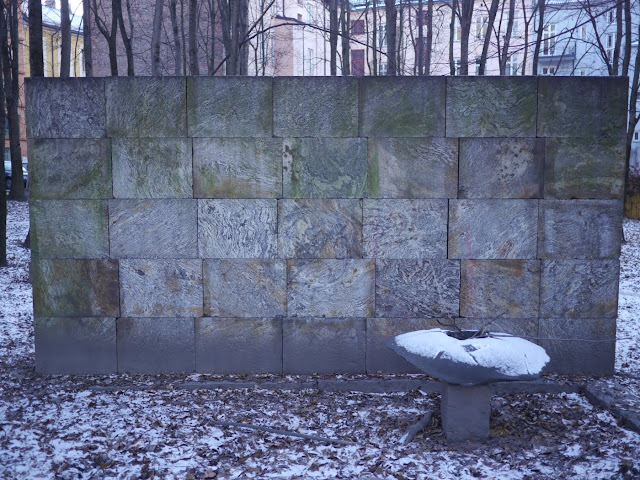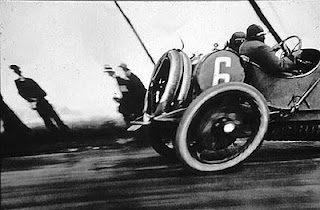The
Panasonic GH3 comes with a large choice of video modes. In this article, I try to make some sense of the choices. This writeup is not intended for experienced video users, since most likely you already know what modes you prefer.
PAL and NTSC versions
The camera comes in two versions. One for the PAL market, and one for NTSC. The PAL market includes Europe, China, Africa, Australia and New Zealand, while the NTSC market includes the Americas and Japan.
The difference is the set of framerates the cameras can capture in their video modes. PAL cameras can do 25fps and 50fps, and NTSC cameras can do 30fps and 60fps. In addition, both camera models can do 24fps.
The difference in framerates is to match the different TV broadcasting standards. Today, this seems like a strange difference. Not that many people use TV sets anymore, and besides, many modern TV sets can handle both PAL and NTSC input.
If you have a PAL version of the camera, you are stuck with the 24fps, 25fps and 50fps framerate options. And if you have an NTSC camera, you can choose between 24fps, 30fps and 60fps.
There is also a 30 minute video recording limit in some markets, due to tax reasons.
24fps
The 24 frames per second option is useful if you are shooting video for use in motion picture movies. These have used 24fps as a standard for years, while 25/50 (PAL) and 30/60 (NTSC) are more useful for video and television use.
Some newer movie productions even double the framerate to 48fps, for example the movie "The Hobbit".
I would use 24fps only if you know that you are going to be shooting for motion picture/cinema use. Otherwise, use 25/50 (PAL version) or 30/60 (NTSC version).
Video formats
The GH3 gives you the choice of three video formats: MP4, AVCHD and MOV.
MP4 This mode gives you a single video file with the .mp4 extension. In this mode, you get the most compressed files, i.e., the smallest video files. This is good for uploading videos to YouTube, for example, when you are not going to be editing the videos.
AVCHD In this mode, the camera creates a directory catalogue structure with your video files inside. The actual video files have a .mts extension. In terms of compression, this mode sits in the middle, having a compression level comparable to the predecessor GH2.
MOV For the very best video quality, use this mode. Each video capture gives you a single .mov file, and with a high frame rate, the files can become rather huge.
Using the
MOV format requires that you have a fast SD memory card. A card with the description "Sandisk Extreme 45MB/s U1 Class 10" does work, also with the 72Mbps All-Intra mode. A card called "Sandisk Extreme 30MB/s Class 10" did not work with the
MOV format at all, not even with the 50Mbps mode. That is my experience, anyway.
Interlace and progressive
The interlace video mode originates from older, analogue TV transmission technology, and gives the appearance of a quicker frame refresh rate by updating odd and even numbered rows in every second frame.
This is a rather obsolete technology by now, and I would advice against using interlace video with the GH3. Use it only if you positively know that you need interlaced video, for some reason. The interlace video modes are designated with a lower case
i, like here:
Rather, use the progressive mode, designated by the lower case
p:
All Intra
The
GH3 adds a totally new option, to use the All Intra compression scheme in the MOV video mode. This is the highest bitrate option available, with a staggering 72Mbps output, about three times the maximum of the GH2.
What's special about this mode, is that it does not employ any between frame compression, only inside each frame, hence the name All Intra. It is designated with a capital
I:
For the ultimate video quality, should you use this mode? It may be useful if you need a strong consistency between each frame, for example for green screen video shooting. Otherwise, I think it is largely overkill to use this mode. The massive files will clog up your hard drive, with a fairly marginal quality improvement.
Also, there is evidence to support that the normal 50Mbps mode has better video quality, despite having a lower bitrate. The reason is that the All Intra mode is less efficient, it requires a lot higher bitrate to be similar in quality.
So the bottom line on All Intra is: Only use if you speficially need consistence between each frame. Otherwise, the 50Mbps mode is the best for most uses.
720p and 1080p
There are two choices of resolution: High Definition (HD), 1280x720 and Full HD (FHD), 1920x1080. Given this choice, most people would want to use the largest resolution. After all, you can always scale down from FHD to HD, but you cannot scale up from HD to FHD.
Or can you? Some would argue that with the 50/60 fps All Intra (capital I) mode in 720p mode, you could scale the footage up to 1080p, and it would still be very sharp.
Most of the time, though, I would go for FHD 1080p.
Summary
The table below sums up the major video modes available, and the maximum bitrate
| HD 1280x720 | FHD 1920x1080 |
| MP4 25p/30p | 10Mbps | 20Mbps |
| AVCHD 50p/60p | | 28Mbps |
| AVCHD 50i/60i | 17/13Mbps | 24/17/13Mbps |
| AVCHD 24p | | 24/17Mbps |
| MOV 24p/25p/30p/50p/60p | 50Mbps | 50Mbps |
| MOV 24p/25p/30p All Intra | 72Mbps | 72Mbps |
| MOV 50p/60p All Intra | 72Mbps | |
As you see, the MOV video format gives the highest bitrates, with the All Intra mode at the top with 72Mbps. The All Intra mode is not available for FHD 1080 @ 50fps or 60fps.
Conclusion
If you want a good video quality, for uploading to YouTube and other video sharing services, you can safely use the MP4 format, for reasonably sized video output files. For the very best video quality, use the MOV format.
Personally, I would use FHD (1080 rows), and select 25/30 frames per second when the light is dull, and 50/60 frames per second in bright light. The lower frame rate allows for using a slower shutter speed, hence it is more usable indoors and in other low light situations.
In my experience,
the continuous autofocus during video recording works best in the high frame rate, i.e., 50fps or 60fps, depending on if you have a PAL or NTSC version.
On the other hand, note that the high fps modes (50/60) will not work with the
Extended Tele Conversion (ETC) mode. ETC is useful for extending the reach of your lens, while retaining the resolution. For this mode to work, you must set a lower frame rate, 24, 25 or 30 fps.
Starting video recording
On a related note, there are two ways to start the video recording. The first is to use the dedicated red video button on the rear. The second is to set the dial mode to "Creative Movie Mode", and then use the shutter button.
These two are quite different, so lets look more closely at them:
1. The red video button. When using the dedicated video button, the camera ignores your mode dial settings, and does it's best to give you a sensible exposure. This usually involves using the lens wide open, unless you have a fast or wide lens, and it is very bright.
This is usually all well, but the camera will often set a very fast shutter speed. When recording videos, the ideal is often to use a 180° shutter, meaning that the shutter speed is twice as fast as the frames per second rating. So if you have a European camera used at 25 fps, you will want to set the shutter speed to 1/50s. The reason why 180° shutter is often used, is that moving objects will have some motion blurring, making the video look more fluid.
This is impossible to control when using the red video button, and, in fact, the camera does not say what shutter speed it uses. To control this, you need to use the Creative Movie Mode.
One advantage when starting video recordings using the red button, is that you can press the shutter during video recordings, to take still images. If you select 4MP picture size, this is done seamlessly, and there are no gaps in the video when taking still images. Using larger still images, though, there will be a small gap in the video stream when you take a still image.
2. Using the Creative Movie Mode. In this mode, you need to use the shutter button to start and stop video recording. Hence, it is not possible to take still images during video capture.
The advantage, though, is that you can set the exposure mode to P, A, S and M, just like when taking still images. In the M mode, you can set the aperture, shutter speed, and ISO settings manually for full control. To change the exposure mode setting, you can touch the LCD display in the top left corner, in the movie camera icon.
















































